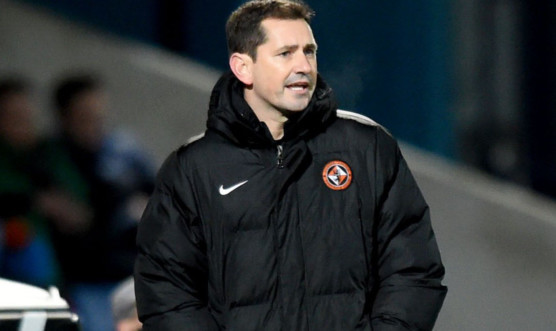Dundee United manager Jackie McNamara feels the school of hard knocks can beat academies when it comes to educating players.
The Tangerines have just snapped up Simon Murray from Arbroath, a player who did a tour of the juniors, got rejected by his first senior club Montrose and has now fought all the way to earn a crack at the Premiership with the Tannadice men.
United also had a leading part in one the greatest Scottish football fairytales of the recent times – the Andrew Robertson story.
Robertson was handing out match programmes to punters at Scotland games while playing part-time for Queen’s Park before getting a move to Tannadice.
His performances for McNamara’s side saw him get called up by the Scots and then last summer came the big-money switch to the bright lights of England with Hull City.
Currently on the books at United are Robertson’s fellow former Spiders, Aidan Connolly and Blair Spittal, both of whom have made their way into McNamara’s plans this season.
Then there is the story of Chris Erskine, who was in the juniors until snapped up by McNamara for Partick Thistle, only to be taken to United once his gaffer took charge at Tannadice.
There is a pattern there and it is one that the Tangerines’ boss is happy to follow.
“This is a second chance for Simon and offering that to a player is something I have been keen on since I was at Thistle,” said McNamara.
“We had to do it there because of different reasons, mainly financial.
“Some players need the platform of full-time football on which to build.
“Hopefully, that will be the case for Simon.
“We already have an example here of a player who had been playing at junior level but is now a first-team man at a club like United.
“Chris Erskine was in the juniors before he stepped up to Partick and then we brought him here.
“I think sometimes players can come through academies and be a bit robotic because they have been shown what to do, how to play.
“These lads who come through maybe the juniors and lower leagues learn their trade by playing competitive matches and that’s the best way to learn football in my opinion.
“You go by your instincts and intuition, rather than be told to pass from A to B to C.
“I like it better if a player finds out how to do things himself.
“That’s how we work here, giving the lads the chance to express themselves as players.
“We don’t want them to be tied down.
“I think sometimes in Scotland we stifle players with negativity rather than being positive about what they are good at.
“We put too many people in positions to stop the opposition rather than create.”
Murray’s experience at the ripe old age of just 22, argues McNamara, will have made him grateful to be given such an opportunity.
“The hunger is the biggest thing for guys like Simon,” added the manager.
“People can come through an academy and then think: ‘That’s it, I’m a first-team player.’
“Whereas lads like Simon who have seen the other side of it in the juniors and lower leagues can really appreciate what they have.
“Some get disillusioned and are lost to the game but others bounce back and see it as a second chance to prove people wrong.
“We have a few lads like that now and, of course, Andy Robertson fitted that profile exactly.”
